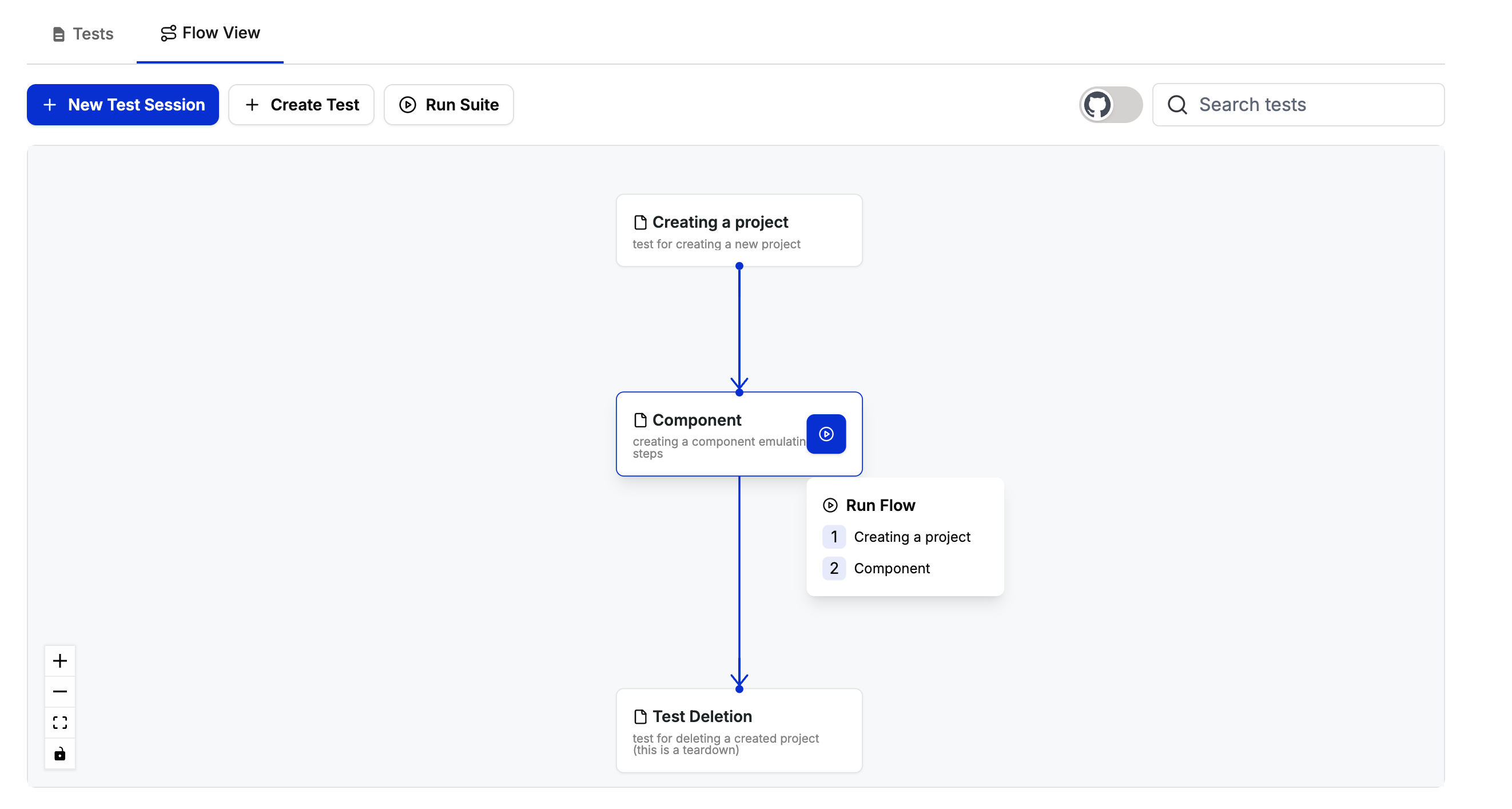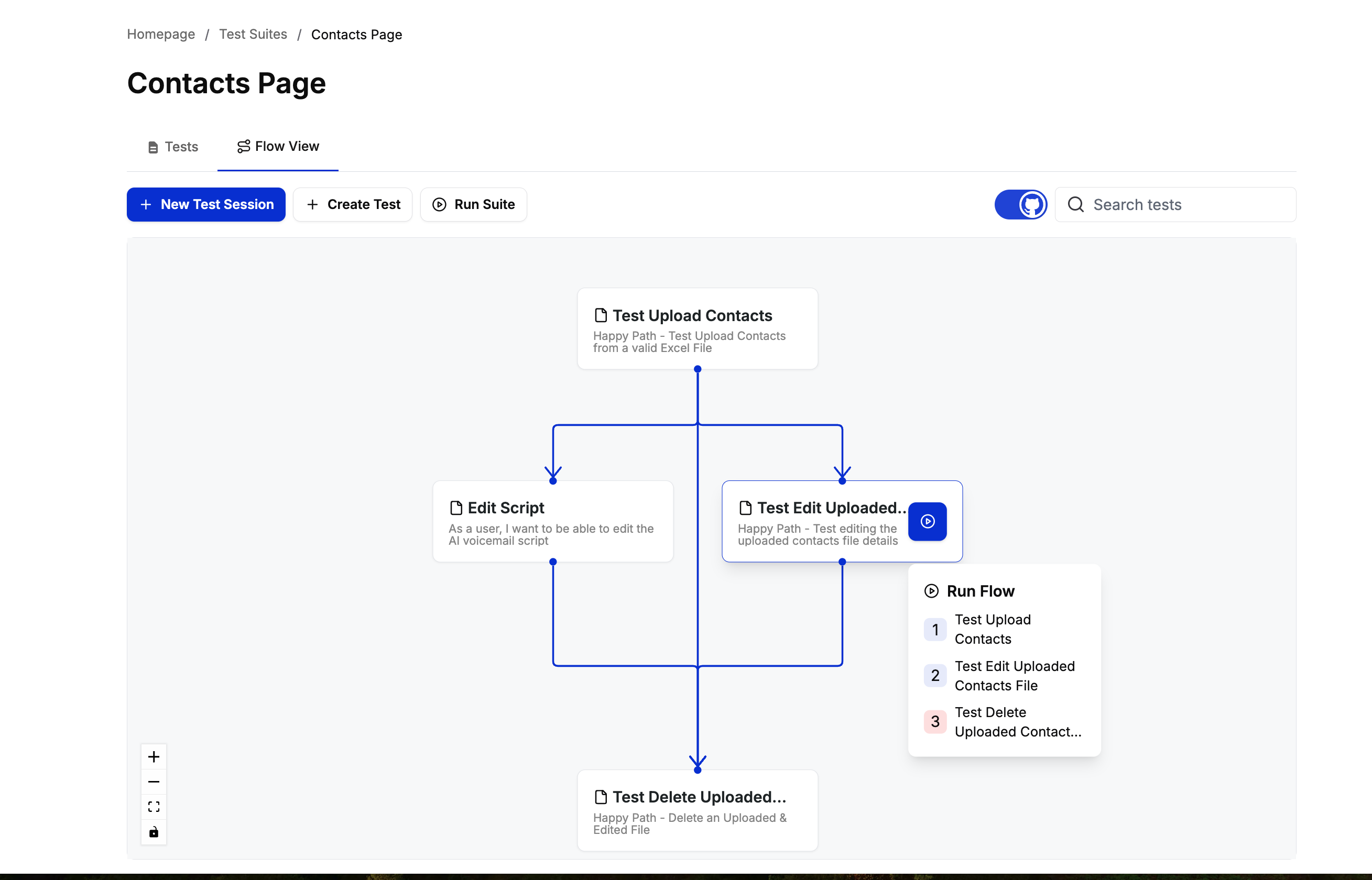Sequential Dependencies
Sequential dependencies ensure tests run in a specific order, where each test waits for its predecessor to complete before starting. This is useful when tests have a natural progression or when later tests depend on the state created by earlier ones.
Sequential Dependencies Example
- Tests run in the order specified by the dependency arrows
- If a test fails, subsequent tests will not run (except for teardown tests)
- Each test must complete before the next one begins
- This ensures data consistency and proper state management between tests
Layer-based Dependencies
Layer-based dependencies organize tests into layers, where all tests in one layer must complete before any tests in the next layer can begin. This is particularly useful for complex test scenarios with parallel execution requirements.
Layer-based Dependencies Example
- Tests are organized into numbered layers (Layer 0, Layer 1, etc.)
- All tests within a layer can run in parallel
- A layer must complete all its tests before the next layer begins
- This enables efficient test execution while maintaining necessary dependencies
Teardown Tests
Teardown tests are special tests marked to run at the end of a test suite, regardless of whether previous tests succeeded or failed. They are crucial for proper cleanup and resource management. Key features of teardown tests:- They run even if previous tests in the sequence fail
- Typically used for cleaning up resources or reverting changes
- Help maintain a clean state between test runs
- Ensure proper resource cleanup even after test failures
Example Use Cases
-
Resource Cleanup:
- Deleting test data
- Removing created users
- Closing connections
- Reverting system changes
Best Practices
-
Organize Dependencies Logically
- Group related tests together
- Keep dependency chains as short as possible
- Use layers for tests that can run in parallel
-
Use Teardown Tests Effectively
- Keep teardown tests focused on cleanup only
-
Plan Your Test Structure
- Consider dependencies during test design
- Review and optimize test execution order
-
Monitor and Maintain
- Optimize for execution time
- Remove unnecessary dependencies
